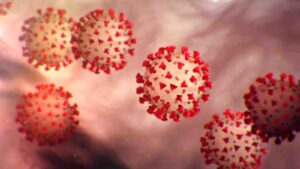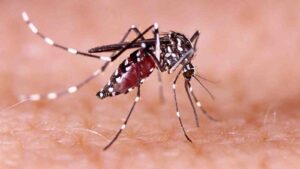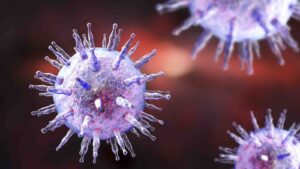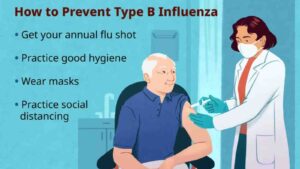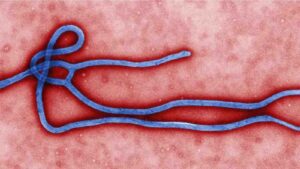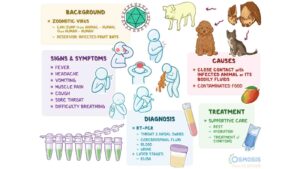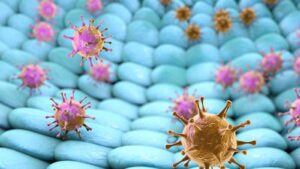Most Dangerous Viruses in the World
Summary
Top 10 Most Dangerous Viruses in the World. No matter how much we love our lives, some nastiest viruses will always surround us which could be horrifying and deadly. Regardless of the era humans have always had to deal with […]

Top 10 Most Dangerous Viruses in the World. No matter how much we love our lives, some nastiest viruses will always surround us which could be horrifying and deadly. Regardless of the era humans have always had to deal with diseases like dengue and Ebola. Recently coronavirus ads up to the list like pestilence. We have compiled 10 most dangerous viruses other than coronavirus, where prevention is the only key rather than cure.
Video: Most Dangerous Viruses in the World
Coronavirus:
The year 2020 started with the fear of this deadly virus named Coronavirus, also known as COVID-19. Members of the family Coronaviridae include Severe Acute Respiratory Syndrome, or SARS, and the common cold. It came from a seafood and meat market in Wuhan, China, in December 2019.
Despite Wuhan and other Chinese cities being quarantined, COVID-19 has spread to almost 70 locations internationally. In the U.S., COVID-19 cases have been confirmed in New York, California, Oregon, and Washington State. Deaths have been reported in both Washington State and California. The World Health Organization has already declared this virus a pandemic.
A coronavirus is a virus that is found in animals and, rarely, can be transmitted from animals to humans and then spread person to person. Fever, coughs, and shortness of breath are the main major coronavirus symptoms, which range from mild to severe. It takes 2 to 14 days after exposure for symptoms to develop. Try to avoid people who are sick or meeting in large groups. Stay at home if you are sick.
Wash your hands often with soap and water for at least 20 seconds, especially after going to the bathroom, before eating, and after blowing your nose, coughing, or sneezing. If soap and water are not readily available, use an alcohol-based hand sanitizer with at least 60% alcohol. Always wash hands with soap and water if hands are visibly dirty. Avoid touching your mouth, nose, or eyes.
The one and only limitation is that COVID-19 has no vaccinations. The virus has killed at least 4200 people and infected more than 11800 worldwide.
Video: Most Dangerous Viruses in the World
Dengue Fever:
Dengue fever is a painful, debilitating mosquito-borne disease caused by any one of four closely related dengue viruses.
An estimated 400 million dengue infections occur worldwide each year, with about 96 million resulting in illness. The Indian subcontinent, Southeast Asia, Southern China, Taiwan, The Pacific Islands, The Caribbean, Mexico, Africa, Central and South America—these tropical areas of the world have the greatest risk of occurring.
Symptoms are mild and can be mistaken for those of the flu or another viral infection, such as the West Nile virus. However, serious problems can develop. The symptoms may progress to massive bleeding, shock, and death.
Use mosquito repellents indoors. When outdoors, wear long-sleeved shirts and long pants tucked into socks. Also, major precautions should be taken to prevent.
Norovirus:
This infection can cause the sudden onset of severe vomiting and diarrhea. The virus is highly contagious and commonly spreads through food or water that is contaminated during preparation or through contaminated surfaces. You can also be infected through close contact with an infected person.
Symptoms such as nausea, vomiting, stomach pain or cramps, watery or loose diarrhea, feeling ill, and low-grade fever usually last one to three days. Most people recover completely without treatment. However, for some people, especially infants, older adults, and people with underlying diseases, vomiting and diarrhea can be severely dehydrating and require medical attention.
Seek medical attention if you develop diarrhea that doesn’t go away within several days. Also, call your doctor if you have severe vomiting, bloody stools, stomach pain, or dehydration.
Rotavirus:
This easily spread virus causes inflammation in the stomach and intestines. From late winter to early spring, it can cause severe diarrhea, vomiting, fever, abdominal pain, and dehydration in infants, young children, and some adults.
If your child has rotavirus, it’s present in their poop before symptoms start and up to 10 days after they taper off. During that time, when your child wipes after using the toilet, it can spread to his hands. If he doesn’t wash his hands, the virus can spread to everything he touches, including things such as sinks and kitchen counters, toys, including iPads and remote controls, utensils, and water.
If you touch your child’s unwashed hands or any object he’s contaminated with and then touch your mouth, you can be infected as well. Sometimes it may lead to herpangina as well.
While there are medications to help with the symptoms, there is no medicine that can cure this another deadly virus. Even children who have been vaccinated against it may still get it more than once.
H1N1:
Scientists recognized a particular strain of flu in the spring of 2009. This virus is actually a combination of viruses from pigs, birds, and humans.
During the 2009 to 2010 flu season, H1N1 caused the respiratory infection in humans that was commonly referred to as swine flu. Because so many people around the world got sick that year, the World Health Organization declared the flu a global pandemic.
In August 2010, the World Health Organization declared the pandemic over. Since that time, scientists have changed the way they name viruses. The H1N1 virus is now known as H1N1v.
The v stands for variant and indicates that the virus normally circulates in animals but has been detected in humans.
The signs and symptoms of swine flu are similar to those of infections caused by other flu strains and can include irregular fever, chills, cough, sore throat, runny nose, watery eyes, fatigue, nausea, and vomiting.
It’s not necessary to see a doctor if you’re generally healthy and develop flu signs and symptoms such as fever, cough, and body aches. Call your doctor, however, if you have flu symptoms and you’re pregnant or you have a chronic disease such as asthma, emphysema, diabetes, or a heart condition because you have a higher risk of complications from the flu.
Read More: Most Dangerous Places in the World
Zika Virus:
First identified in Uganda in 1947, it is transmitted by Aedes mosquitoes, the same type of mosquito that carries dengue fever, yellow fever, and chikungunya virus. A mosquito bites an infected person and then passes those viruses to other people it bites. Outbreaks did not occur outside of Africa until 2007, when they spread to the South Pacific.
It can spread through sex, usually after a person traveled to an area where Zika had broken out, got the virus, and gave the virus to a sex partner who did not travel. Infected women and men can both pass the virus to sex partners without even showing symptoms of infection. Sadly, infected pregnant women can pass the virus on to their fetus.
The disease can cause fever, rash, joint pain, and redness in the whites of the eye, which is similar to adenovirus. But most people won’t know they have it.
There is no specific medicine or vaccine till now. But you can treat the symptoms. Get plenty of rest and drink fluids to prevent dehydration. Take medicine such as Tylenol to reduce fever and pain. If you are taking medicine for another medical condition, talk to your healthcare provider before taking additional medication.
Epstein Barr virus:
Member of the herpesvirus family that can infect humans. This infection is very common; you’ve probably already contracted the virus without even knowing it. The condition that you may associate with is infectious mononucleosis, or mono.
However, experts are researching potential links between EBV and other conditions, including cancer and autoimmune diseases. It spreads from person to person through bodily fluids known as cytomegalo, particularly saliva. This is why mononucleosis, one of the most well-known EBV infections, is casually known as the “kissing disease.”
But you can also get the virus by sharing personal items, such as toothbrushes, or with someone who is carrying this infection. It can also be spread through blood and semen. You can start spreading this sickness to others as soon as you contract it. This means you can pass it on to others before you even start to have symptoms of an active infection.
Over time, EBV can cause several complications, including a weakened immune system, lymphomas, hemophagocytic syndrome, which is a rare immune disorder, and even organ failure.
Although no medicine can cure an epstein-barr till today. For prevention, you can get plenty of rest and drink a lot of water and other liquids to stay hydrated. Suck on lozenges or ice pops, or gargle with warm salt water to make your sore throat feel better.
Influenza B:
The illness results from a virus that spreads very easily from person to person. Someone can contract the virus by coming into close contact with a person who has the infection or by touching a surface that the person has touched, then touching their own mouth or nose.
In many people, the flu goes away on its own without treatment. However, older adults and people with certain underlying health conditions may have a risk of developing serious complications such as ear or sinus infections, pneumonia, or even bronchitis. Any of these may require a person to need treatment in a hospital. In extreme cases, they can lead to death.
Several over-the-counter medications can help ease the symptoms of influenza. These are available from drug stores. Antiviral drugs can reduce a person’s recovery time by around 2 days, but they are only effective if a person takes them within a few days of symptoms starting.
Ebola Virus:
Ebola isn’t as contagious as more common viruses like colds, influenza, or measles. It spreads to people by contact with the skin or bodily fluids of an infected animal like a monkey, chimpanzee, or fruit bat. Then it moves from person to person the same way. Those who care for a sick person or bury someone who has died from the disease often get it. You can’t get Ebola from air, water, or food.
The virus first appeared during two 1976 outbreaks in Africa. The best way to avoid catching the disease is by not traveling to areas where the virus is found.
As the disease gets worse, it causes bleeding inside the body, as well as from the eyes, ears, and nose. Some people will vomit or cough up blood, have bloody diarrhea, and get a rash. It can also damage the immune system and organs.
If you are in areas where the germ is present, avoid contact with bats, monkeys, chimpanzees, and gorillas since these animals spread ebola to people exactly like the nipah virus. You may be able to get the vaccine from the World Health Organization.
Swine Flu:
This disease made headlines in 2009 when it was first discovered in humans and became a pandemic. Pandemics are contagious diseases affecting people throughout the world or on multiple continents at the same time.
It is caused by a strain of influenza virus that usually only infects pigs. Transmission usually occurs from person to person, not animal to person. You can’t catch swine flu from eating properly cooked pork products.
This virus is very contagious. The disease is spread through saliva and mucus particles. People may spread it by sneezing, coughing, touching a germ-covered surface, and then touching their eyes or nose.
Two antiviral drugs are recommended for treating swine flu: Tamiflu, the oral drug, and Relenza.
NIPAH VIRUS:
One of the newly emerging zoonosis that can affect both humans and animals. This is a highly contagious and deadly virus for which there is currently no vaccine and treatment for humans, as well as animals. The natural hosts of this virus are fruit bats, who are symptomless carriers.
Infection can progress silently in humans without showing any symptoms. However, people infected with this virus usually display influenza-like symptoms. Once a person is infected with the Nipah virus, it usually takes 5 to 14 days for an infection to appear.
The only thing that can help a patient suffering from this disease is intensive supportive care. The caretaker, though, needs to take precautions so that the infection does not spread. Thus, whilst providing the necessary care and support, the caretaker must take basic precautions like wearing a mask, cap, gloves, and washing hands.
Read More: Terrifying Prehistoric Animals You are Glad are Extinct
SARS:
The first cases of SARS occurred in late 2002 in China. Because of the contagious nature of the disease and the delayed public health response, the epidemic spread rapidly around the globe. Final statistics from the World Health Organization showed 8,096 reported illnesses and 774 deaths.
Symptoms begin two to seven days after acquiring the virus. Initially, the illness resembles influenza and lasts for up to one week. Symptoms include fever, chills, headache, aches or pain in the muscles, a general feeling of weakness, and poor appetite. Nausea, vomiting, and diarrhea are less common.
The contagious period is generally from the time symptoms start and is greatest during the second week. Avoid leaving home until 10 days after symptoms end due to possible contagiousness.
Research on a vaccine continues, but none is available yet. Most research is examining the virus itself and chemical pathways that may pose opportunities for drugs to treat it.
How do you protect yourself from this virus? Let us know in the comment section. Share this with your friends to make themselves aware of this deadly virus.
